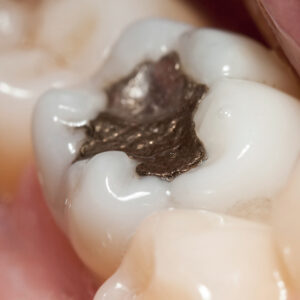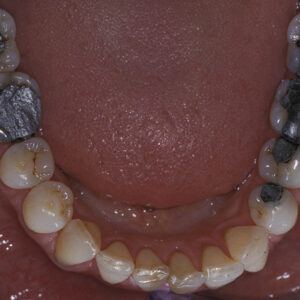Mercury In Dentistry
Dental amalgam fillings are the largest, most direct source of intentional mercury exposure to the population and are a major source of mercury body burden for humans.
In addition to the direct mercury exposure from the fillings themselves - there are four hazards created by the use of dental mercury amalgam that may lead to indirect mercury exposure:
- Emissions from crematoria and dental offices.
- Contaminated cemeteries with high methylmercury levels.
- Water water - sewerage is mercury contaminated from human excrement.
- Clandestine diversion of dental amalgam to artisanal small-scale gold mining.
According to the EPA dentistry is the number one cause of mercury pollution entering wastewater. Dental mercury still represents one of the largest and most preventable releases of mercury into the environment - even with 100% compliance of amalgam separators. Amalgam separators are not the solution - they collect less than 20% of the total amount of mercury used in dentistry as the majority of mercury volatilises into the air.
Tonnes of mercury are released into the atmosphere every year from dental clinics replacing amalgam fillings. They also pollute in other ways - with the Crematoria Society of Great Britain estimating that by 2020, the amount of mercury emissions from the cremation of “baby boomer” amalgam bearers may approach up to a third of all mercury emissions for their country.
Dental Amalgam has been used by dentistry for over 150 years to treat damaged and decayed teeth.
Unfortunately, most of the public remain uneducated on the fact that amalgam fillings are not 'silver' - containing about 50% mercury.
In spite of amalgam manufacturers clearly labelling the risks of using a mercury based product - the dental industry continues to lobby governments worldwide to continue the use of a primitive, toxic product that poses great risks to the environment and human health.
A major Australian based manufacturer of dental amalgam products states the following on the material safety data sheet:
Exposure may aggravate kidney disorders, chronic respiratory disease and nervous system disorders. May cause damage to blood, kidneys, liver, brain, peripheral nervous system, central nervous system. Other adverse effects: Very toxic to aquatic organisms, may cause long-term adverse effects in the aquatic environment.When a product's manufacturer clearly states the potential for significant harm to be caused and yet dental industry does not act - it is clear that the health of consumers, dental workers and the environment is not being prioritised.
Measuring exposure to mercury is difficult, yet it is well documented through autopsy studies that humans with dental amalgams placed have toxic levels of mercury in their brains and/or kidneys.
These studies found that the average mercury levels in the brain for those with more than 12 amalgam fillings was at least eight times above levels considered to be neurotoxic.
Dental Amalgam poses great risk to children, especially in utero and for new borns, as there is a correlation between the number of maternal amalgam dental fillings and the mercury levels in fetal tissue, infant tissue and breast milk.
Learn more about the scientific evidence here.

Read more about mercury myths here.
Choose A Mercury Safe Dentist
The use of dental amalgam poses large risks to the dental patient, dental workers and the environment. Please support dentist's that accept the science, and act progressively to protect patients, their staff and the environment.
Say No To Mercury only recommends dentists who have been certified by the International Academy of Oral Medicine & Toxicology (IAOMT), and practice the Safe Mercury Amalgam Removal Technique (SMART).
Read about the SMART certification below or find a recommended dentist here.

The SMART Certification
The IAOMT has always been highly concerned by the continuing use of mercury amalgam fillings and the high levels of mercury exposure during the removal of an amalgam filling.
High levels of mercury vapour and particulates are produced by high speed dental drills, which can then be inhaled and absorbed through the lungs or ingested posing great risks to patients, dental staff and the environment.
A dentist who has become SMART Certified is a dentist who has dedicated time into studying the hazards that of mercury dental amalgam. They understand the multiple levels of harm that dental mercury causes and have use the best available technologies and management protocols to protect the dental workers and their families, their patients and their children. SMART Certified dentists also use special air and water filters helps reduce the impact of environmental mercury pollution.
